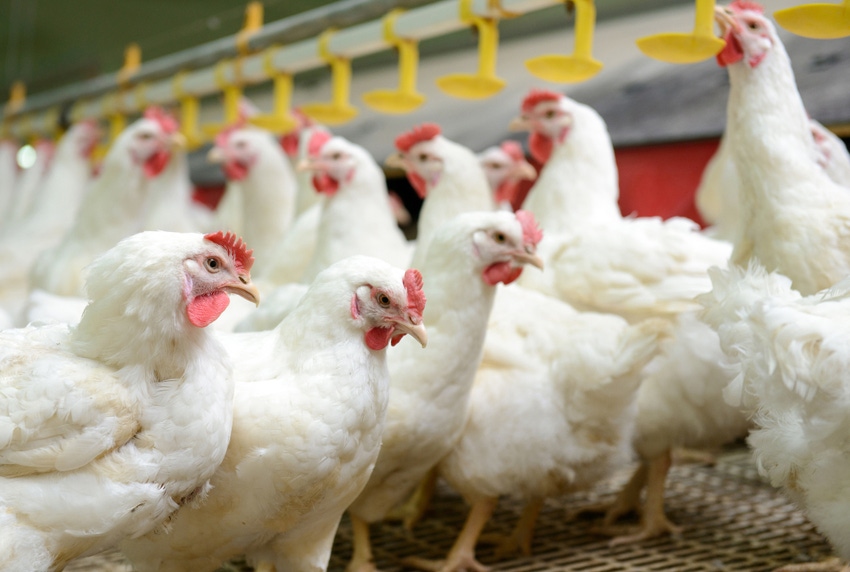Broiler breeders staying in flock to older ages, but eggshell quality may be substandard in older birds.
October 22, 2020

Broiler breeders that are fed twice a day display less foraging and pecking behavior and more eating and resting behavior, and some birds even produce more eggs, according to recent research conducted at Wageningen University & Research (WUR) in the Netherlands.
On average, more and more broiler breeders stay fit and productive at an older age, the researchers said, which means that the birds could stay in the flock for longer than the customary 60 weeks. This is sustainable and logical from an economic perspective. In older animals, however, eggshell quality is sometimes substandard.
That is why researchers from Wageningen Livestock Research set out to investigate whether twice-daily feeding has an impact on the quality of the eggshell, WUR said. As it turns out, this does have positive effects, but not directly on the eggshell.
Broiler breeders are often fed early in the morning. In the study, a group of broiler breeders received regular feed at a single set time, WUR said, while another group was given regular feed twice a day, and another group was fed twice a day with special morning and afternoon feed (split feeding).
“The assumption is that by providing one portion of morning food, the nutrients may not be available at the right time of day to meet the needs of the broiler breeders. This is especially true for calcium, which is essential for eggshell formation. The formation of the eggshell starts in the afternoon or early evening and takes about 20 hours -- so multiple hours after the feed has been provided,” WUR researcher Rick van Emous said.
The research demonstrated that split-fed broilers laid more eggs, WUR said. Furthermore, twice-daily feeding and split feeding had negligible effects on hatchery quality.
“However, we did observe a different behavioral pattern between the various groups of animals during the day. Both groups of twice-daily fed animals were much calmer. They forage and peck less. Those are clear signs of improved animal welfare,” van Emous explained.
Sustainability
However, this does not solve the original problem of older animals producing weaker eggshells.
“Breeders normally receive extra calcium and grit from 40 weeks on, to support eggshell formation. We have now used 50-week-old animals and conducted this feed research over 10 weeks,” van Emous said. "In the follow-up study, I would like to monitor a longer period of time to see what benefits split feeding and twice-daily feeding can introduce for reproduction, hatchery quality and behavior."
It would be good to feed breeders twice a day in any case, according to van Emous -- “even the young breeders. It's better for them physiologically and in terms of digestion, as well as for their behavior and well-being. In the long run, it would be nice to have breeders with better welfare, whose lives we can extend up to 65 weeks.”
This study was carried out by Wageningen Livestock Research on behalf of and financed by the Consortium Breeders In Technology and the Netherlands Ministry of Agriculture, Nature & Food Quality.
You May Also Like



